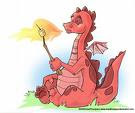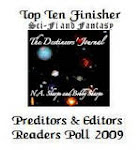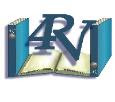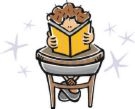Many writers who have written about fictional magicians and wizards, and the readers of such work have believed, on some level, that such magic is possible. A lot of the beliefs about magic stem from ancient roots with stories that have been handed down generation to generation. The belief of magical powers has been strong through many cultures throughout time. Even in a country as young as the United States, many young women lost their lives by being accused of witchcraft. In William Shakespeare’s time, witches like the Weird Sisters (Macbeth) and wizards like Prospero (The Tempest) were considered to be very real characters. Modern writers and readers have gotten away from the belief that magical powers are real and more into the realm of imagination from the realm of “what if”.
The magic that is the topic of these novels and place may be inspired by what was once deemed to be factual and common practices of their day, but may also have the inspiration of a writer’s imagination into the realm of “what it”. Even when the story line is based on common beliefs, the writer deems the strength, effect and general rules of magic to be precisely what the writer requires to make his plot work.
Non-fiction is an document or representation of a subject which is presented as fact. This presentation may be accurate or not; that is, it can give either a true or a false account of the subject in question.
The magic that is the topic of these novels and place may be inspired by what was once deemed to be factual and common practices of their day, but may also have the inspiration of a writer’s imagination into the realm of “what it”. Even when the story line is based on common beliefs, the writer deems the strength, effect and general rules of magic to be precisely what the writer requires to make his plot work.
Non-fiction is an document or representation of a subject which is presented as fact. This presentation may be accurate or not; that is, it can give either a true or a false account of the subject in question.
What is interesting in this genre, it is by no means impossible, for fictional magic to leap from the pages of fantasy and become accepted as canon through the writings of fantasy. One example is The Necronomicon which first appeared in 1922. The Necronomicon is a fictional book appearing in the stories by horror fiction novelist H. P. Lovecraft. It was first mentioned in Lovecraft's short story "The Hound", though its purported author, the "Mad Arab" Abdul Alhazred, had been quoted a year earlier in Lovecraft's "The Nameless City". It was invented purely from the imaginings of H. P. Lovecraft an author of horror fiction, fantasy fiction, and science fiction. Soon, other authors such as August Derleth and Clark Ashton Smith, referenced it in their works, with Lovecraft's approval, as he believed such common allusions built up "a background of evil verisimilitude."
Many readers have believed it to be a real work, and booksellers and librarians have received many requests for; it is even found listed in rare book catalogs. A card for it even showed up in the Yale University Library.
There have been several attempts by modern authors to produce it as a Babylonian mythology work with a series of sigils from medieval ceremonial magic to aid the practitioner to control or ward off demons.




























2 comments:
Interesting! I'd not heard of The Necronomicon but I love the idea of different writers referencing the same fictitious volume. Funny that it's gotten so many requests!
Elizabeth
Mystery Writing is Murder
Hi Elizabeth and Karen,
Thanks so much for stopping by. I find this topic interesting (she grins sheepishly) Glad you both liked it. I think it is so cool when reference is made in a book and then picked up in another book or ends up being published by the author as a spin-off type publication (Harry Potter charity "school text books")
Nancy
Post a Comment